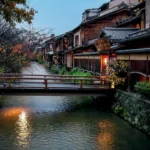Lisbon, the capital of Portugal, is a city rich in history, culture, and charm. While many travelers flock to well-known attractions like the Belém Tower and Jerónimos Monastery, the city also harbors lesser-known treasures that offer a more intimate and authentic experience. These hidden gems showcase the true essence of Lisbon, revealing its unique character away from the typical tourist paths. In this article, we’ll explore some of the best-kept secrets of Lisbon that are waiting to be discovered by curious travelers.
1. The Tile Museum (Museu Nacional do Azulejo)
Lisbon is famous for its beautiful azulejos (tiles), which adorn many of the city’s buildings and streets. The National Tile Museum, housed in the Convent of Madre de Deus, is dedicated to the history and art of Portuguese tiles. This often-overlooked museum showcases an extensive collection of tiles dating back to the 15th century, providing insight into the evolution of this unique art form. Visitors can wander through the museum’s impressive exhibits and admire the intricate designs, including a massive panoramic tile mural of Lisbon before the 1755 earthquake.
2. LX Factory
Tucked away in the Alcântara district, LX Factory is a vibrant creative hub that many visitors miss. This former industrial complex has been transformed into a trendy space filled with art studios, boutiques, restaurants, and bars. The graffiti-covered walls and industrial-chic atmosphere make it a favorite spot for locals and artists alike. Whether you’re browsing unique shops, enjoying live music, or sampling delicious food from one of the many eateries, LX Factory offers a unique and contemporary experience that contrasts with the historic charm of central Lisbon.
3. The Carmo Convent Ruins
The Carmo Convent, located in the Chiado district, is one of Lisbon’s most striking historical sites. This Gothic convent was largely destroyed in the 1755 earthquake, leaving behind hauntingly beautiful ruins that stand as a reminder of the city’s past. Today, the roofless church is an open-air archaeological museum, where visitors can explore the remaining arches and columns, as well as a small museum housing artifacts from the convent’s history. The serene atmosphere and unique architecture make the Carmo Convent a peaceful retreat in the heart of the city.
4. Miradouro da Senhora do Monte
Lisbon is known for its stunning viewpoints, or miradouros, offering panoramic views of the city. While many travelers head to popular spots like Miradouro de Santa Catarina, the lesser-known Miradouro da Senhora do Monte provides an equally breathtaking view without the crowds. Located in the Graça neighborhood, this viewpoint offers sweeping vistas of Lisbon’s red rooftops, the Tagus River, and the iconic 25 de Abril Bridge. It’s the perfect place to watch the sunset or enjoy a quiet moment while taking in the beauty of Lisbon from above.
5. The Fado Museum
Fado, the soulful music genre that originated in Lisbon, is an integral part of Portuguese culture. While many visitors attend Fado performances in the city’s restaurants and bars, the Fado Museum in Alfama offers a deeper understanding of this musical tradition. The museum features interactive exhibits, historical recordings, and personal stories from some of Fado’s most famous performers. Visitors can learn about the origins of Fado, its evolution over the years, and its significance in Portuguese society. The museum also hosts live performances, providing an immersive cultural experience.
6. The Greenhouse (Estufa Fria)
Nestled in the Eduardo VII Park, the Estufa Fria is a hidden oasis in the middle of Lisbon. This large greenhouse complex houses a diverse collection of plants from around the world, including tropical, subtropical, and desert species. The Estufa Fria is divided into three sections: the cold greenhouse, the hot greenhouse, and the sweet greenhouse, each offering a unique botanical experience. The tranquil environment, with its cascading waterfalls, ponds, and winding paths, makes it an ideal spot for a peaceful stroll or a quiet escape from the bustling city.
7. The Thieves Market (Feira da Ladra)
For those who love a good bargain or are in search of unique souvenirs, the Feira da Ladra, or Thieves Market, is a must-visit. Held every Tuesday and Saturday in the Alfama district, this sprawling flea market is one of Lisbon’s oldest and most famous. Here, you can find everything from antiques and vintage clothing to handmade crafts and quirky trinkets. The market is a treasure trove for collectors and curious shoppers alike, offering a glimpse into the everyday life of Lisbon’s locals. Haggling is part of the fun, so don’t be afraid to negotiate for a better price.
8. Casa do Alentejo
Tucked away on a busy street in central Lisbon, Casa do Alentejo is a hidden gem that transports visitors to a different time and place. This stunning 17th-century palace, once the residence of a noble family, is now a cultural center dedicated to the Alentejo region of Portugal. The building’s Moorish-inspired architecture, with its ornate tiles, grand staircase, and beautiful courtyard, is a sight to behold. Inside, visitors can explore the richly decorated rooms and enjoy traditional Alentejo cuisine in the on-site restaurant. Casa do Alentejo is a true hidden gem, offering a unique cultural experience right in the heart of Lisbon.
Conclusion
Lisbon is a city full of surprises, with hidden gems waiting to be discovered around every corner. From the artistic vibes of LX Factory to the serene beauty of the Estufa Fria, these lesser-known attractions offer travelers a chance to experience the city in a more intimate and authentic way. By venturing off the beaten path and exploring these hidden treasures, you’ll gain a deeper appreciation for Lisbon’s rich history, vibrant culture, and unique charm. Whether you’re a first-time visitor or a seasoned traveler, these hidden gems will make your trip to Lisbon truly unforgettable.





